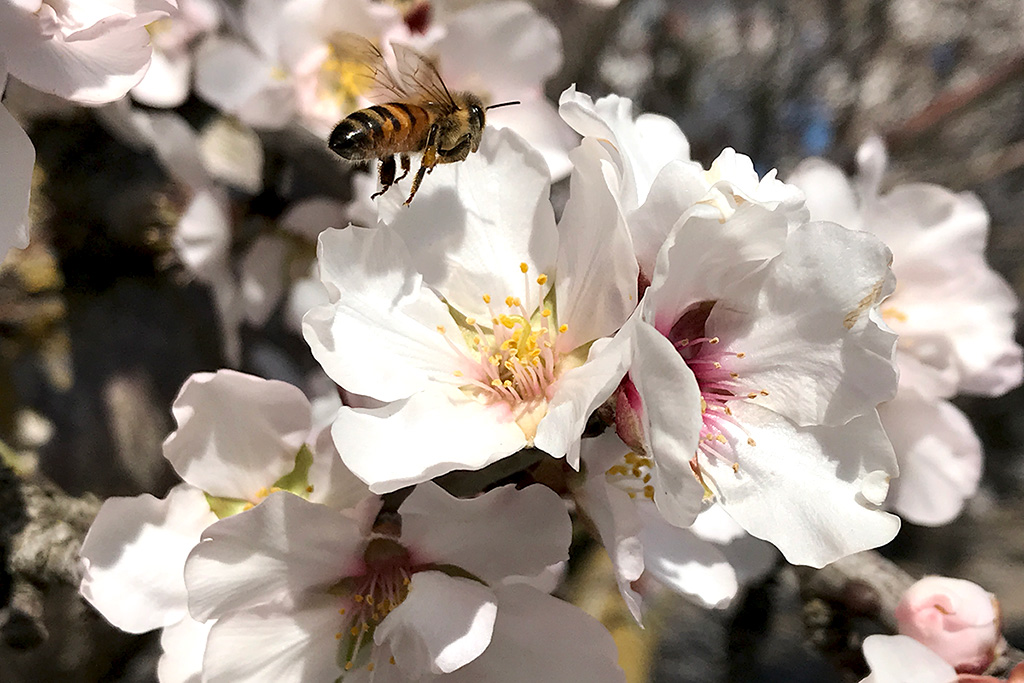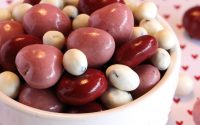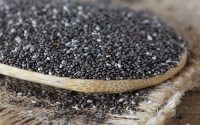Bees and Blossoms
Blossoms Bring Beauty to the Central Valley:
California accounts for producing over two-thirds of the nation’s entire fruit and nut supply. Thousands of people travel to the Central Valley every year to see and take pictures of the spectacular sight of the fruit and nut trees in full bloom (01). In fact, there are hundreds of different varieties of produce grown throughout the Central Valley. Popular crops found here include almonds, nectarines, peaches, plums and pluots, cherries and apricots. Alongside each crop is a different type of blossom and not all bloom at the same time. Some of the blossoms might look similar to one another, but each has unique characteristics.
Most of our Central Valley blossoms have five-six tiny petals, are velvety to the touch, and fill the air with a sweet aroma. Almonds and apricots are the earliest to bloom, displaying white blossoms with a tinge of pink. Plums and pluots bloom during mid-March, exhibiting blossoms in shades of whites, pinks and dark reds. Cherries consistently bloom last, revealing a full spectrum of whites and pinks from soft to bright (depending on the varietal). Peaches and nectarines have an unpredictable bloom date, but generally begin after almonds and before cherries, bringing a broad range of rosy hues. In total, peak blossom season usually hits around late February and lasts only a few short weeks. Not only are they pretty to look at, some blossoms can even be eaten in small quantities. Many chefs incorporate blossoms into their dishes as a garnish, providing a mildly sweet flavor. Blossoms are paramount for fruit and nut production as they are the beginning stage of the fruit’s life-cycle and are critical for pollination and fertilization.
Bees, Pollination and Fruit Production
Pollination is the process of pollen being given to the plant’s female reproductive organs so the plant’s fertilization process can begin. While some crops can self-pollinate, most crops around the nation rely on bees, butterflies, hummingbirds and other insects to cross-pollinate. Out of all cross-pollinators, bees are the dominant. Like the blossoms, the role bees play is exceptionally important for our food production. There are nearly 20,000 different species of bees with the two best known being the bumblebee and honeybee. At least a third of our staple foods wouldn’t exist without cross-pollinators (02). Sadly, the population of these busy little helpers has been declining to the point of real concern.
Between 2015-2017, the nation lost over 60 percent of its entire bee colonies (03)(04). This rapid decline is classified as Colony Collapse Disorder (CCD). The stress caused by transportation of hives, climate change, loss of habitat and parasites are all causal factors linked to CCD. Thankfully, actions are taking place to boost bee population again and you can do your part by getting involved! You can plant an organic garden filled with bee-friendly plants such as lilacs, mint or white clover, buy local honey or adopt/sponsor a beehive through your local bee foundation. Also make certain to report any sightings of an abnormal amount of dead bees to the United States Environmental Protection Agency (EPA). Bees rely on pollen from blossoms, blossoms rely on bees’ pollination and we rely on both; if it weren’t for the blossoms and bees, there would be no produce for us to enjoy. So, if you missed out this year, we hope you’ll be able to take delight in blossom season someday no matter where you live and appreciate our busy bee friends.
- https://www.cdfa.ca.gov/statistics/
- http://www.fao.org/biodiversity/components/pollinators/en/
- https://phys.org/news/2016-05-nation-beekeepers-lost-percent-bees.html
- https://phys.org/news/2017-05-survey-honeybee-losses-horrible-bad.html






